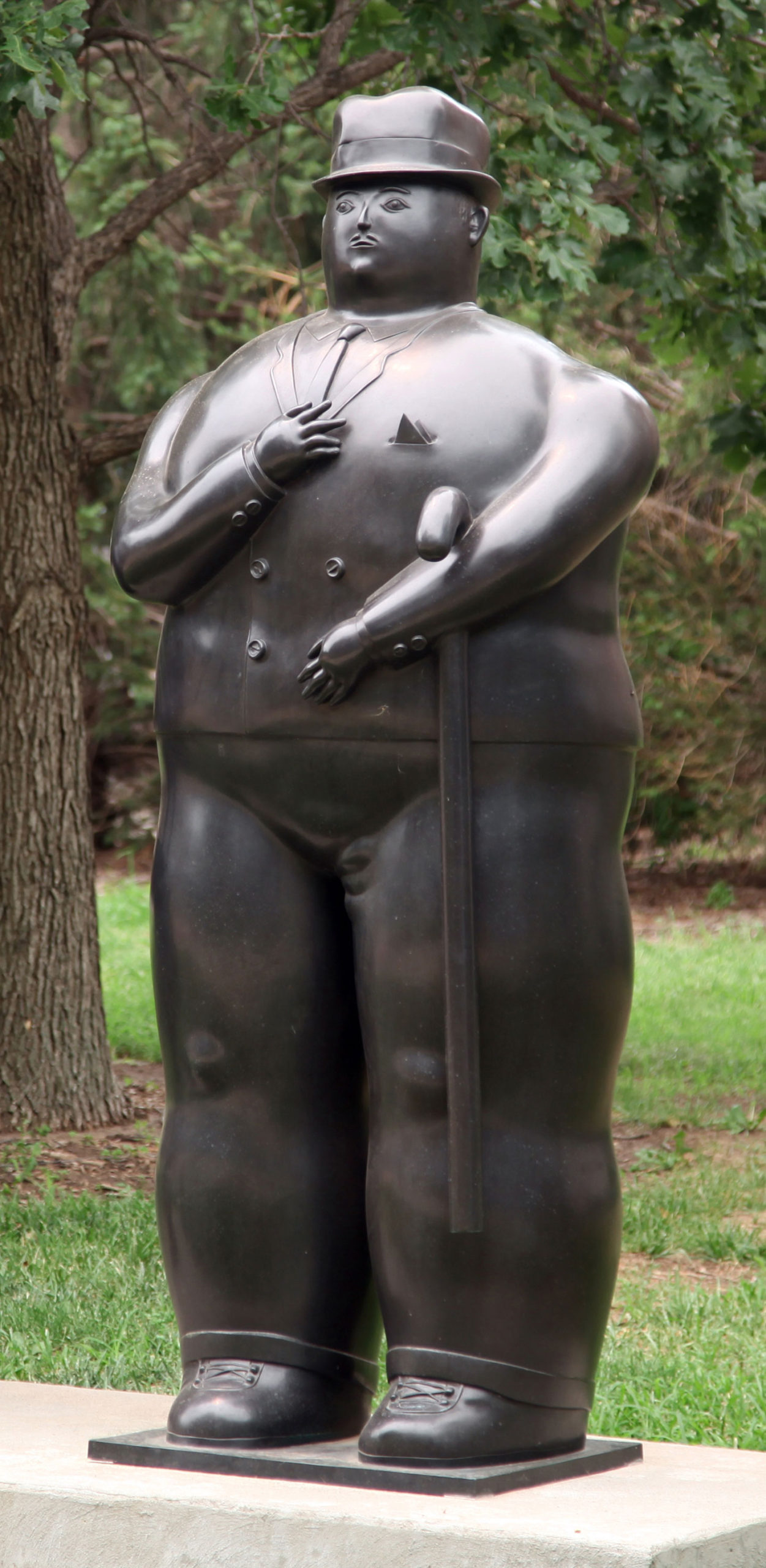Warning: Undefined array key "HTTP_REFERER" in /data/wp/content/html/ulrich/wp-content/plugins/code-snippets/php/snippet-ops.php(582) : eval()'d code on line 70

Man with Cane
“Many people know me as the painter of the ‘fat ladies,’ and it doesn't disturb me,” says artist Fernando Botero. However, he clarifies that he’s never painted a fat person in his life—instead, the exaggerated proportions of his figures engage issues of volume and sensuality. With this in mind, explore Botero’s Man with Cane and Woman with Umbrella. How do their pillowy, billowing bodies emphasize the three-dimensional aspect of sculpture? Do the forms seem heavy, or do they defy the weight of the bronze medium? What makes the figures sensual? Is it their round, sinuous form? The smoothly polished surface? Their accoutrements, which may slyly refer to sexuality—after all, the man holds a rigid, phallic cane, while the woman shelters underneath a rounded, concave umbrella suggestive of the mons pubis. Certainly Botero’s figures possess an exuberance and even childlike quality that make them quite popular. His sculpture and paintings can be found in major collections and public plazas around the globe. The artist usually avoids easily discerned meaning in his work, although he’s overtly criticized contemporary politics in several series, including one addressing the US prison camp at Abu Ghraib. Here, however, his meaning is more enigmatic. We can make deductions about the figures based on their garments. For instance, what social class do you think these two come from? Do they seem to belong to a particular time period? It’s difficult, though, to say whether Botero is showing us the figures in a straightforward way, celebrating them, or satirizing them.
Exhibitions:
Fernando Botero, Columlbian, born 1932
Man with Cane, 1977
Sculpture | bronze; casting
76 1/2 H x 38 1/4 W x 34 D in
Gift of George and Virginia Ablah
Warning: Undefined array key "HTTP_REFERER" in /data/wp/content/html/ulrich/wp-content/plugins/code-snippets/php/snippet-ops.php(582) : eval()'d code on line 70


